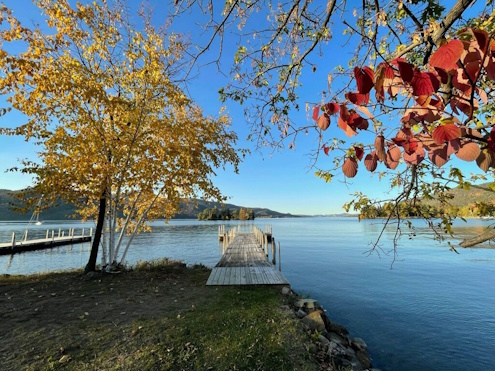
Kayakers explored the area near the Homer Point Wetlands, shown here, during the LGLC’s 2024 Hike-A-Thon. Photo by Carl Heilman, II/Wild Visions, Inc. (Click image to see larger version.)
The Lake George Land Conservancy (LGLC) has permanently protected 45 acres in Huddle Bay and along Homer Point Road in the Town of Bolton.
The protected land is nearly 90% wetlands, including emergent wetland that shares 2,500 feet of shoreline with Lake George. The wetlands preserve water quality by naturally filtering pollutants, sediments, and excess nutrients before they can enter the lake.
The wetlands on the property include several ecosystem types, including a black spruce-tamarack bog that is uncommon in the area. The conservation of this rare ecosystem provides critical habitat to a wide variety of animals for shelter, food, and breeding. Evidence of deer, black bear, bobcat, coyote, and small mammals has been observed on the property.
The LGLC purchased the land in a bargain sale from the Gillies family, who wished to see the sensitive land permanently protected from development.
“This natural land will forever protect the water quality of Lake George while providing important wildlife habitat and scenic enjoyment to residents and visitors alike,” said LGLC Executive Director Mike Horn. “We are grateful to the Gillies family for choosing to work with the LGLC and for their generous contribution towards this important project.”
“We are so excited to partner with the LGLC to make sure this sensitive wetland property is conserved in perpetuity,” said the Gillies family. “Our family has been enjoying Lake George for decades and we are pleased to be able to do our small part in protecting the lake. We would like to thank the LGLC for their efforts on this project and overall leadership to preserve important lands in the lake’s watershed.”
The protection of these 45 acres is made possible through a partial donation by the Gillies family, and through funding from a Water Quality Improvement Project (WQIP) grant, which is awarded and administered by the New York State Department of Environmental Conservation (DEC).











